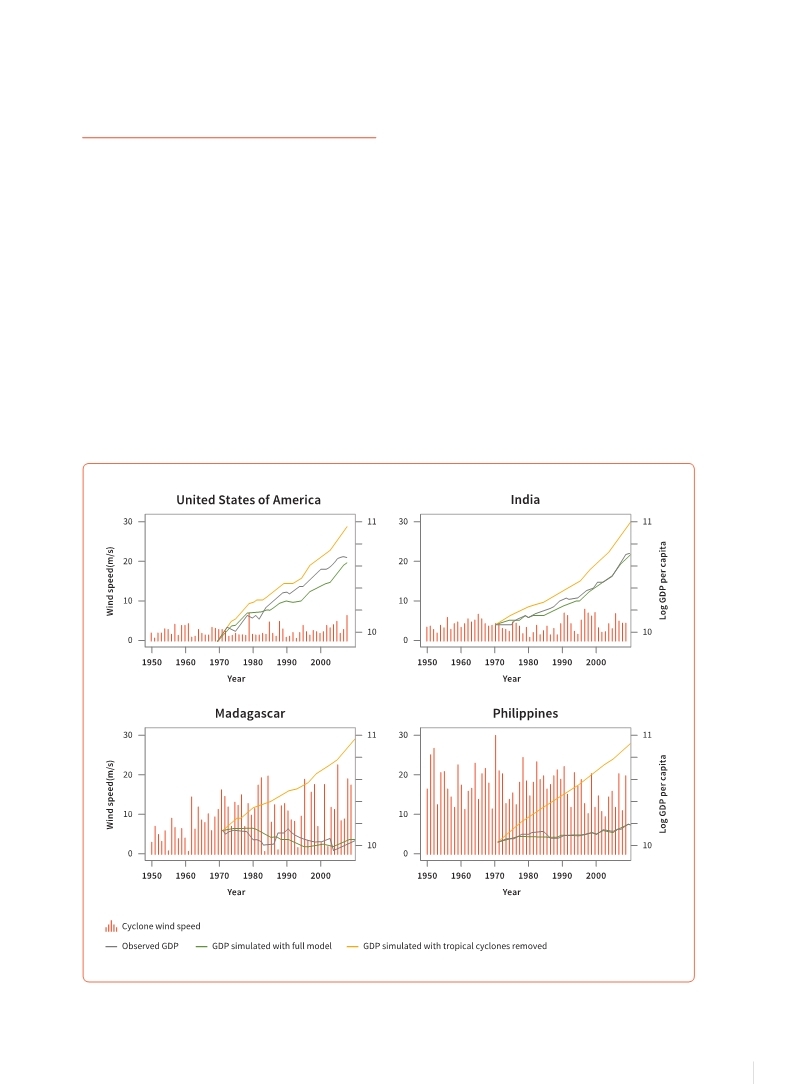 |
Global Assessment Report on Disaster Risk Reduction 2013
From Shared Risk to Shared Value: the Business Case for Disaster Risk Reduction |
 |
Global Assessment Report on Disaster Risk Reduction 2013
From Shared Risk to Shared Value: the Business Case for Disaster Risk Reduction |
|
|


|

86
Part I - Chapter 5
5.3
Macroeconomic effects
Disasters can negatively impact the economic development of any country, but for smaller economies that are heavily dependent on single economic sectors, these impacts are likely pervasive. Direct and indirect losses can result in macroeconomic effects that cumulate over time.
Although countries with fiscal gaps may have more difficulty recovering after a disaster, there is less certainty regarding longer-term macroeconomic impacts (World Bank, 2011
World Bank. 2011.,The changing Wealth of Nations : Measuring Sustainable Development in the New Millennium., Washington DC,. . inflows of resources for reconstruction or to the creative destruction of obsolete capital, may even contribute positively to the economy (Albala-Bertrand, 1993
Albala-Bertrand. 1993.,Political Economy of Large Natural Disasters With Special Reference to Developing Countries., Oxford,UK: Clarendon Press.. . Skidmore and Toya. 2002.,Do Natural Disasters Promote Long-Run Growth?, Economic Inquiry 40: 664-687.. . However, while these positive effects may be possible in competitive and resilient economies with high levels of GFCF and without financing gaps, this is less likely in countries with low levels of GFCF and with large gaps. Numerous studies indicate that disasters tend to impact negatively on economic development (Mechler 2004; Hochrainer, 2009
Hochrainer, S. 2009.,Assessing the Macroeconomic Impact of Natural Disasters: Are there any?, Policy Research Working Paper 4968., Washington: World Bank,. . Noy, I. 2009.,The macroeconomic consequences of disasters., Journal of Development Economics, 88 (2009): 221-231.. . (Source: Hsiang and Jina, 2012
Hsiang, S.M. and Jina, A.S. 2012.,Development after Disaster., Background Paper prepared for the 2013 Global Assessment Report on Disaster Risk Reduction., Geneva,Switzerland: UNISDR.. . Figure 5.10 Simulations of GDP growth and tropical cyclone exposure
|



 |
